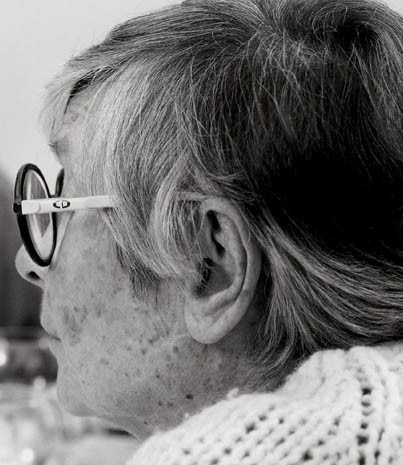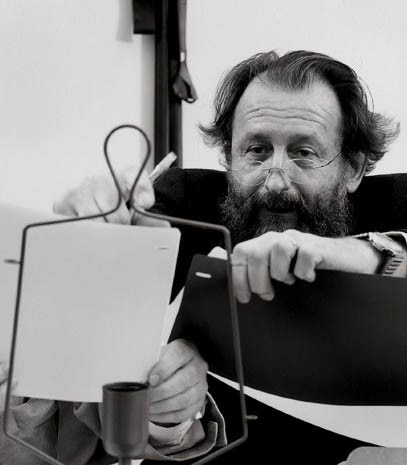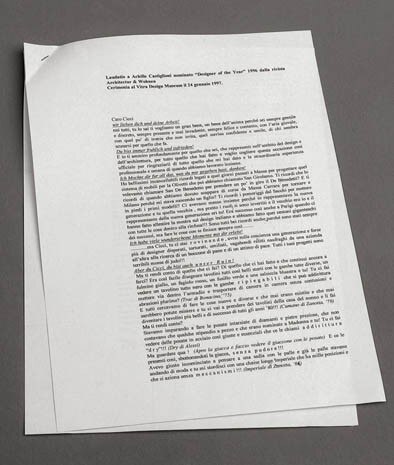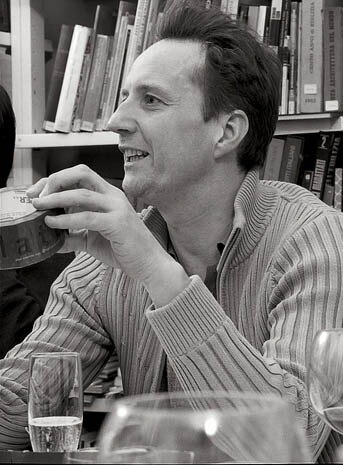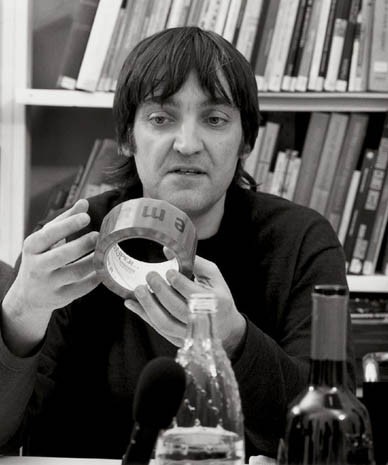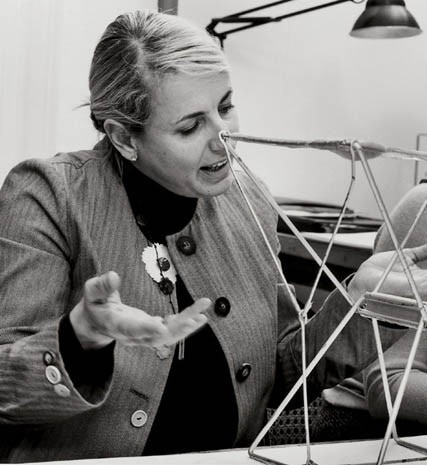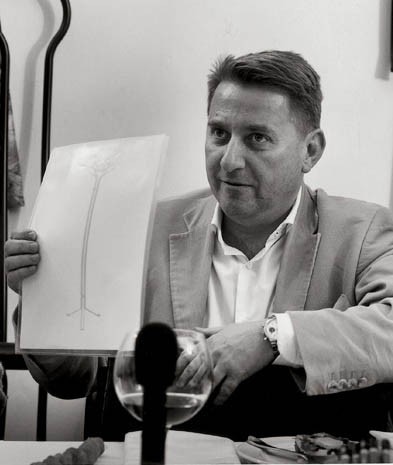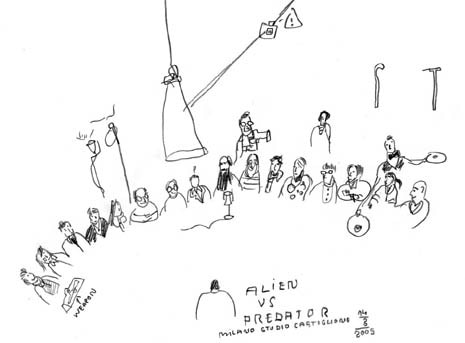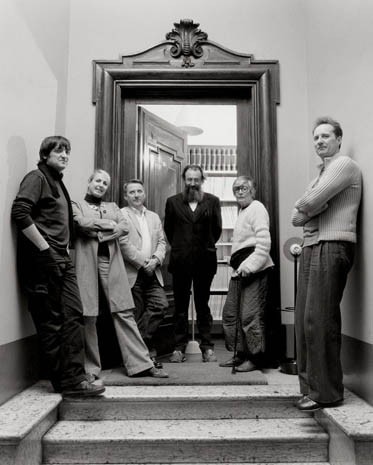1. Objects born out of analogies and objects that create them
domus We are here because we all have a huge desire to understand why this space is still so magical and remarkable. It is “food for thought” – a place filled with extraordinary traces of creativity. We are also here because we wanted to ask you to help us understand, via your experience as designers, artists and intellectuals, how the mechanism of analogy works in the creative process. We have asked you to bring along objects – by famous names or anonymous like those used by Achille Castiglioni in this studio – that have inspired you or helped you in your design work. We are not interested in hearing you talk about these objects. What we want to understand is the special relationship that is unique but still based on a principle of analogy - transferring an object to a different context from that in which it was originally created –and which is established each time between an everyday object and one of your projects, writings or works. We believe that if there is still something to learn and discover from the amazing work of Achille Castiglioni – if we really want to force open the mystery of his genius - it lies in that changing analogical relationship that he always managed to create between the two spheres of the object: the “found” one and the “designed” one.
Lisa Ponti I have brought an object designed by a young British designer I met some time ago at the Milan Furniture Fair. It is a small vase that develops horizontally; the wonderful thing about it is that you can put very little in it, sometimes just one flower. It is made out of a heavy material to stop it tipping over; I have often used it at home. I put a violet or a leaf in it so that I could keep them close to me. It looks like a squashed pipe or a cushion.
domus That’s interesting; you have immediately inverted the discussion. Instead of starting from an unsigned object as a source of inspiration, you have told us the story of an accomplished project.
LP Yes, and of a forgotten name...
James Irvine I have exaggerated and brought three objects. During the Milan Furniture Fair there will be the presentation of six exterior benche projects by sid designers and realised following a competition called by the municipality of Milan. I designed one of them. I spent months in despair wondering about how to create my bench. After much research, I found a material invented by a British man. It is recycled plastic that can be curved using heat and is very cheap. After finding the material, the project immediately took off in my mind and I managed to define it. The second object is an egg I bought in Mexico. It was with numerous other objects of different shapes, even the donkeys were covered with these decorations. It may look very kitsch, but I think it is splendid. It seems made for being hung in a tree. There is something in the colours that fascinates me. I found these last decorative objects in India. Their effects prompted my project for clothes hooks for Danese, although the connection may seem absurd. It comes from the fact that I had these crazily coloured threads on the table. I was always playing with them; I created forms to hang clothes on and used them to design objects.
domus You have shown us three different analogical devices: in the first case, the analogy is based on a material; in the second, it has a morphological appearance (polychromy); in the third, playful symbolism.
Patricia Urquiola Nearly everything I design is born out of analogy, but sometimes the inspiration only comes to me as time passes. I keep objects in the house that lie there refining, a little bit like wine. I know that something will come out of them. The time that passes between when I come into possession of an object and the moment I use it helps me to mature the proper conceptual detachment.
LP When designing, it is sometimes enough just to change the “sense” of an object. I am thinking of Gio Ponti; instead of inventing a new material he invented a new marble simply by cutting a block of marble in the wrong direction.
Michele De Lucchi I have brought the text of the speech I read on 24 January 1997 at the Vitra Design Museum when Achille Castiglioni was named designer of the year by Architektur & Wohnen (see p. 32 in this issue of Domus). I also have the Artista lamp-gift that I designed for Produzione Privata. You take it as a present when going to see friends for dinner; you assemble it and every guest does a drawing or writes something on it; you can choose a different lampshade colour according to the type of evening. The lamp is simply made of wire. Designing lamps was for me, as it was for Achille, more a hobby than a profession. The fil rouge of all Achille’s work was very much like mine, and it lies in the history of the lamps I have designed. Achille always used to say: “What is design for? What makes one object more beautiful than others? What do you have to put into an object? Functionality? Economy? Beauty? No. Beautiful objects must contain three things: curiosity, amusement and congeniality.” Castiglioni split the world of design down the middle.
domus Patricia, you also worked with Castiglioni.
PU I met Castiglioni at university; it is thanks to him that I decided to become a designer and not an architect. I consider the concept of analogy as something linked to Castiglioni, to the degree that when I think of an object “by analogy”, I stop and think about what he did. Look at this angler’s stool: it is small and will fit into a woman’s handbag. When you open it, you realise how fantastic it is. I know something good will come out of this but for the moment I am stuck. One day, a Korean girl called Sonia, brought me this very simple object, a Spontex scouring pad. But it was gold in colour (instead of silver) and wrapped in transparent paper with “Happy Christmas” written on it. By doing this, the pad immediately assumed a value of its own; it manifested a quality; it became an object of design, thanks to a beautiful form of transfer. I need those who get close to me to have this humus.
domus What about the chair you are sitting on?
PU I brought it because it is sort of readymade, another operation that Castiglioni loved. I adored Magistretti’s Selene chair, and it’ one of my favorites in the office. I have always been attracted to the seat cover made of small balls that taxi drivers usually use. So I bought one and realised that the cover went perfectly with Magistretti’s chair. So this combination will always be a precious object for me, without becoming a production project. I will never be one of those designers who let themselves be tricked by new technology; I am not dying to use its innovation. I believe instead that we have to “digest” all the elements that are inherent in our origins to be able to recreate a new personal language. When I started to work on the theme of the ideal house in Cologne, I returned to many of the folk objects of my childhood because I saw them as possibilities to cover the objects I produced.
domus So does your DIY chair have only symbolic value?
PU I believe curiosity goes hand in hand with the desire for things and the desire must be “friendly”: you must want to touch an object; you have to preserve a mood that is never cold. It is no accident that the craft world underlies all the work I am doing with Driade. The covered contemporary pieces retain some of that fantasy I was talking about. I have also designed hammocks that bear the meaning of luxury and relaxation, starting from a bag with a large ring that I still use. And the latest lamp I am developing for Foscarini was born out of a plastic bracelet. My work is one long analogy.
domus Sometimes, this obsessive relationship with objects can lead to a form of collecting, a fetish for objects. Is that true?
LP I do not collect. I can remember all the works of art that have passed through my home and then moved on. I am not afraid of them going all over the world. What matters is that they have been with me for a while. I do not collect objects. I have only kept two. One is, of course, a lamp by Gio Ponti: a wall lamp he designed for a hotel in the 1960s; it consists of a brass plate cylinder and a neon tube inside. It is such a geometric and pure object that it works well both vertically – its original position – and horizontally as I have placed it. Near that I have a lamp by a German artist who worked in a big factory that manufactured plastic objects – basins, baths... She took a sheet of plastic when it was still soft, like a wet handkerchief, and gave it a casual form, a fold, and then he put a neon tube inside. These are two opposite examples of absolute “non design”.
MDL Designing without designing. This was also a typical Castiglioni attitude. I am thinking, for instance, of the lamps made just with the bulbs, like the Toio. They are lamps with no construction.
domus But to make Toio, which seems created just out of the use of a car headlight, Castiglioni had to go to America to find that particular headlight. The fact that it is a readymade does not avoid a high degree of sophistication in the choices.
MDL The great thing, in my view, is not the added level of interpretation but the reduced level in the project. What is really important is that when Castiglioni thought of Toio, he did it having the light that cars make as a first reference. You just take a headlight and it is done: that is the lamp, the project!
2. designing objects and designing concepts
Martí Guixé When I see plants in a home or office, I often think their function is to create a patch of green colour. So I thought of designing a big roll of green sticky tape that performs the function of a plant without actually being one. I think a plant is an object of nature that also becomes a consumer object. An important point in my thought is that in order to be contemporary, an object must attribute importance to the function and not to the object.
domus Yours could be seen as a form of reductionism and yet it is also a position opposed to that of Patricia’s.
PU We are very different. Martí is a provoker, a conceptualist. I have a more ironic and unnatural vision. My character tends towards irony. He on the other hand has a fantastic vision and I am surprised that Spain – which has a banal and adulterated vision of design – has produced someone like him. He is an outsider; he has a very refined philosophy and I need no affinities or analogies with him to love him.
MG I have many problems with designers, because I have a problem with objects and designers make objects.
PU We believe in objects while you think they merely represent the ordinary.
MG Come on, this is 2005, a world where everything is moving; everything is changing and the object remains virtually immobile and stable: the object in itself goes against all thoughts of contemporaneity. What is contemporary is information.
domus But information is also born out of fixed-object situations and conditions.
MG An object can always be abstracted into information and information is far more nimble, mobile and changeable. It is the function of objects to be contemporary.
domus But we cannot do without objects.
MG It is possessing objects that is no longer contemporary. There is a need to use them but not to possess them. This means that objects are limited to their function: as soon as this has been performed, I prefer to throw the object away. I feel much better if I do not possess anything.
JI “Disposable use” is a consolidated practice in our society. Do you have a car? Did you choose it?
MG I have, unfortunately!
PU Martí does not deny material value but he does not see it as a value to be defended.
MG I would rather rent a car than own one.
domus How can you believe that objects can simply “not exist”?
MG That is not what I mean. When all is said and done, my green sticky tape is an object. But it is an object that is not physical because it reduces its size to the minimum, to sheer function.
domus It could be argued that there are no forms in Castiglioni’s work, that you find the forms afterwards; they are only functions of information, relationship, curiosity, amusement.
PU Martí works precisely on this: he works on functions. Indeed, he works a lot on food.
LP I, on the other hand, think that Castiglioni is all a matter of forms.
MDL Castiglioni’s form is always attached to the object. With Memphis, we were trying to create forms that were as enucleated as possible from the object. The more we managed to separate the form from the object and the more forms we managed to add to it, the happier we were. Castiglioni’s form is always a perfect form that makes the object. It is carefully studied.
MG As a designer, I loved Memphis and I don’t think it has been surpassed yet. It is perfect.
MDL You are a provoker and Memphis was a provocation.
MG After Memphis, I have not seen any more designs worthy of this name.
domus In a certain sense, Memphis was the attempted suicide of design. Jurgen, can you show us what you have brought?
Jurgen Bey I wanted to take care of it so I put it in this box, which is from the Hermitage. I was there last year and it really is incredibly beautiful with all the things they have there. It was not so during the war when the Russians protected all the art by taking it away, leaving only the frames. Nonetheless people kept on working there and kept telling visitors everything about what had been hanging there. This is everyday life that has not been designed. It’s like what Martí was saying about not needing the object. For me this is total beauty and represents my romantic way of thinking.
domus What’s inside the box?
JB An object that comes from India. It’s made of peacock feathers, which are the most precious things that a peacock produces to get a mate. Yet this thing is made to move dust: it’s just a broom. Normally if you ask a designer to design a broom he would use not too expensive materials because it’s for grey and ugly dust. People feel that dust is annoying but why not use the best thing you have to clean it because then maybe it wouldn’t grow back so fast; or maybe it would because then everyday it would get cleaned up with these feathers. I suppose you could call me romantic. This is the world I like; it is very functional and good thinking, yet it is not the ordinary way of thinking.
3. Objects for consumption and objects to be loved
MDL I had two teachers: Ettore and Achille (it’s a bit like having gone through the Trojan War). Castiglioni and Sottsass managed to give objects a sense of preciousness by means of a wealth of spirit, a wealth in the general sense. Ettore designs by addition; he has always designed everything by drawing, unlike Achille who had a pencil stub in his pocket and drew strokes. When designing objects, Achille’s efforts did not go so much towards removing because his was not minimalism; on the contrary, he was happy for the objects to contain great ideas. But he drained them and tried to make it so that the idea was perceived in the most immediate way possible. And when there is an idea, there is also emotion, amusement and congeniality.
MG In German there is a word – Frech – that reflects the concepts we are talking about. It means impertinent, cheeky, but in a positive sense. I think this term describes Castiglioni’s work well.
JI Martí, where do you see consumerism in all this?
MG Everything is consumerism. I love consumption.
MDL Beware, consumption is the market! The older I get, the more I fear the market, although I know it is inevitable. When I ask myself: “Must I necessarily make objects that will be a market success?” I get angry with myself, although I know there is no alternative. The only option would be to go back in time, back to bartering and exchanging carrots for tomatoes.
MG There is a company in France that does precisely that; it operates a parallel economy to the one governed by money.
MDL But there is another option: that of adoring objects. Sottsass says: “The only ecology I see possible is that of affection, that of loving objects so much that you just cannot throw them away.”
MG Yes, but be careful. You can love an object without possessing it. That is the difference.
PU The objects that I have loved a lot were not in my own home, but in friends’ homes. I started to love Castiglioni because friends had Parentesi in their home - which was a surprising object, not a function! I am talking about objects that I have consumed through others; consumption is more virtual than people think. A work of art seen in a museum or an object seen during a weekend spent in another person’s home are objects that, in a certain sense, we feel we own, as much as those in our own home.
MDL The formula of your thought, Martí, is the formula of the paradox, which drives you to cross the boundaries of common sense to reach another world. But common sense is like infinity, it does not exist. If it did, there would be infinite infinities. This is the sense of the paradox. In my view, your idea of thinking that you can move from the paradox of living without objects to the paradox of living with very few objects or many objects is very good. The idea of working with provocation is great because it creates side steps, and without side stepping you end up working the same way all the time. Castiglioni’s objects also have a content that creates a distance, a side step, a difference. What is important in Castiglioni’s work is that all his projects are products; they are never ideas that cannot be produced.
domus What is the difference between projects and products?
MDL A fine project is not always a fine product, although sometimes I see splendid projects that do turn into splendid products. Martí’s sticky tape project is a splendid project but it is not a product. There is an idea, irony, reasoning; it is all there but it is still sticky tape. And yet there are unfortunately products that are highly successful but are horrible projects.
domus For example?
MDL Ikea has thousands of splendid products that are not projects, in the sense that they do not have interesting thought contents; they do not have intellectual refinement or any link with contemporaneity.
MG Careful! Think of the sticky tape: Is the product an object itself or is it the perception – what makes you “feel” the object – that is the real consumer product?
MDL A product is what you make for the market.
MG If, however, you change the perception of reality, the market changes because it is bound to communication.
MDL It is true that the market also produces a myriad of distortions determined by communication, advertising, recurring tastes, retailers and the capacity to sell or not to sell.
MG The sticky tape is a limited series and serves to make my form of thought known. Economically, it works very well. It does not have to be sold in a supermarket, but it must be found in a gallery or a museum so that it can convey the spirit of the person who designed it, so that people can then ask me to do more projects. Then it becomes an object that sells, although it does not sell itself.
MDL Martí, you will never become rich!
MG I am already rich!
JB I would like to react on the two things that Martí showed. I start thinking from the product itself, as if I were tape. There was a time when tape was just made to glue cardboard boxes, and it did its job very well. It could be like a normal family where the son was made just to glue boxes, but then he thought he should be something different because he wanted to grow, he thinks he can be more; he can even be like a plant as Martí says. What I really like about it is that if you are a gardener then this could be the ultimate product because you can grow your garden in a room like this. You just need tape. The tape really has invented a kind of new world. Of course this is only for a certain number of people. Martí also said that this is a tape that can get into a museum. Normally a tape could only get into a museum by the back door, and then this one came in through the front door saying, “I can be a plant, and you can buy me and I’m art.” It’s like learning from what’s already there, and even learning to re-look at a plant.
domus Does this mean that the sticky tape really can replace plants?
JB The tape will always have its function, because it can never be a substitute for a plant. I like this as a designer but I don’t like it if I’m not a designer. What I like about a real plant is that it only asks me for water and one day it will give me a flower. Whereas the tape will always be asking me, “When are you going to give me a flower?”
MDL But the tape will last much longer than six months…
JB The plant will also last more than six months, but it only needs to be there one day. What I like is that a tape that was never important became important. The plant can never be redesigned because it has always and will always do its work; so the tape is like the new world. The only reason for having design is not to make the world but bringing in new worlds. And we need designers and architects for that. I believe that everyday life is a very slow system that exists and we need like a language.
MDL I like what you’re saying as an intellectual provocation…
domus Why do you call this “provocation”?
MG Designers use materials like steel or plastic but I use objects as materials, like tape and so on, because I think this is the new nature of the consumer society. For me it’s normal not to use any materials, but a system to build possibilities.
MDL It’s the same as my lamp, which you bring for dinner and it lights up our names. You keep it for a week until the dinner is forgotten and then you throw away the lamp. You throw it away because you don’t need it.
JB But the nice thing about the tape is that it is within a total system. There is even a way to recycle this very simply. Because it comes from industry there is such a big system that it goes as fast and as far as the plants go.
MDL It is not a very expressive material, or very full of possibilities. You can only make square or rectangular leaves…
MG The way you display it is with very standard lines. You don’t do any drawing because the proposal is to make a green spot.
JB That’s exactly what I like about it, because he has the thought that he should definitely not be the one to do the drawing…
MG Why do you want it to be decorative?
JB I’m glad that there are people after you that do it that decoratively, because if you made the world like a god it would be a terrible world. It would be killed by total science and would be only mind. It would be a horrible world! MG No, your world would be horrible! I don’t want to be possessed by objects; I want to help people.
JB Everybody has their own quality and that’s why we need more design. God started with two but it didn’t work out, so he created three and then a heaven and a hell and so on. ..He is always there making a world and making it work.
MG Making it work? What does that mean? The world is the world; you don’t have to make it work. What is your idea of work?
JB My idea is that everyday life works and it makes gorgeous things. For total beauty I don’t believe we need designers.
MG But that’s very local. Your sense of beauty is completely Dutch; beauty is local.
JB This is an example of something I could never design [shows image on computer screen]. When I look at it, I can feel the beauty in my heart. But there is no functionality about it: with the bed this high, putting decoration like this, the chair here and then the radio… As a designer I don’t think you could put these things together, and yet there are houses like this. When I see this picture I am more moved than I am by real design.
JI Ninety percent of people live like this and it’s a happy world.
JB This means that for real life you don’t need designers.
MDL Where did you get this picture?
JB It comes from a book on local farmhouses in East Germany. This is where we don’t need to design, and to be moved like this we also don’t need design. This next picture is of traditional Dutch clothing, which was made about two hundred years ago. Then we go to Japan and you see this: it’s exactly the same, only designed. You can take something from two hundred years ago and put it next to something that’s designed, and it’s exactly the same.
MG But that means that design refers to tradition and handwork. That’s terrible, it’s worse than repetition.
JB It’s a repetition, but it’s also like growing because these are materials and ways of designing that can be made much easier; it’s the same with the tape.
domus The interesting thing about the tape is that it’s an industrial product that has had a small thing changed and has been turned into a tool that can be like this or with stripes and so on.
JB And yet you would prefer to refer to a plant…
MG For me the tape is interesting because once you’ve got the plant as a consumer object the tape ceases to be interesting.
JB The nice thing about the plant is that it doesn’t always do what you wish, whereas the tape does.
MG Yes but it’s more contemporary when the plant does what you want.
JB No…
MG Of course. Do you think that nature is free in today’s society? It’s there to be controlled.
JB You discover new worlds but you refer to old worlds because you have the language. If you didn’t refer to plants nobody would understand what you were wishing for it. So you need the old language to comment on the new things. I’m glad that you’re bringing us into the new world, but you cannot say that you don’t need the old world. Therefore you need everyday life because things have been evolved over fifty or a hundred years of design and made in a second. But in that second you never know if it will work out because something that only lives for a second can never survive if it doesn’t get more years. And that’s where you need everyday life.
MDL And something that lasts for such a short time is especially hard to sell. The problem of the world today is that everything that is sellable has a meaning. My dream is to work without commission.
MG For me it’s a nightmare to work without commission because I don’t have the context.
MDL You can find something inside yourself.
MG No, I am too lazy! I don’t want to work.
